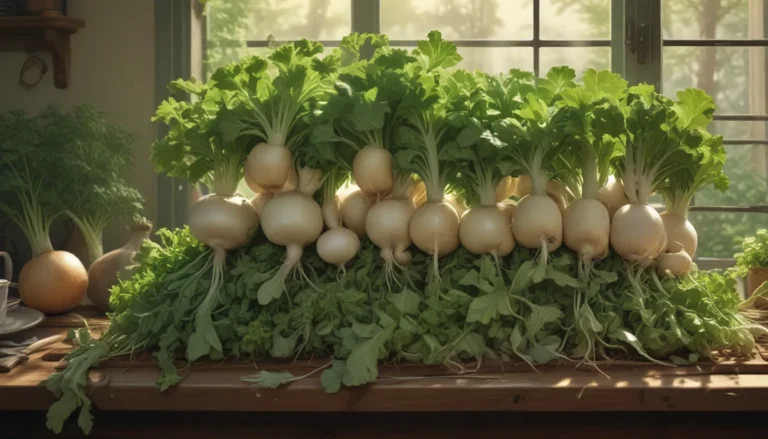A Comprehensive Guide to Planting and Growing Beefsteak Tomatoes

If you’re a fan of juicy, meaty slices of tomato that are perfect for sandwiches or burgers, then beefsteak tomatoes are the perfect choice for your garden. These large, flavorful fruits come in various colors and sizes, making them a favorite among home gardeners.
In this in-depth guide, we will walk you through everything you need to know to successfully cultivate beefsteak tomatoes, from their history and cultivation to managing pests and harvesting. So let’s dive in and explore the world of beefsteak tomatoes together!
What You’ll Learn
Here’s a sneak peek of what you’ll discover in this comprehensive guide:
- Cultivation and History
- Propagation
- How to Grow
- Growing Tips
- Maintenance
- Cultivars to Select
- Managing Pests and Disease
- Harvest and Use
- Quick Reference Growing Guide
Cultivation and History
Originating in the South American Andes, tomatoes have traveled the world to become a staple in many cuisines. Among the various tomato types, beefsteak tomatoes stand out for their large size and robust flavor, making them a favorite among home gardeners.
Rich in essential vitamins and bursting with tangy or sweet flavors, beefsteak tomatoes offer a unique gardening experience. They are primarily indeterminate plants, meaning they continue to grow throughout the season, producing hefty fruits that can weigh several pounds.
Propagation
To grow beefsteak tomatoes successfully, start by planting seeds indoors around six weeks before the last frost date in your area. Plant the seeds in a moistened peat-based growing medium, keep them warm, and ensure they receive adequate sunlight once germinated.
How to Grow Beefsteak Tomatoes
Growing beefsteak tomatoes requires warmth, direct sunlight, and regular watering. Plant them in well-draining soil, amend the soil with organic matter, and provide at least six hours of sunlight daily. Remember to water deeply, stake or cage the plants, and mulch around them to maintain moisture and suppress weeds.
Fertilize the plants every three to four weeks after fruit set to support healthy growth. Growing multiple beefsteak plants can increase your harvest, as these plants produce fewer fruits compared to smaller tomato varieties.
Growing Tips
- Amend soil with organic matter to improve fertility.
- Provide full sun exposure for at least six hours daily.
- Water deeply and regularly to prevent wilting.
Maintenance
Beefsteak tomatoes require staking or caging to support their heavy fruits. Stake the plants early to avoid damaging the roots, and tie them up as they grow. Mulch around the plants to maintain soil moisture and fertility.
Beefsteak Cultivars to Select
When choosing beefsteak tomato cultivars, consider options like ‘Big Rainbow,’ ‘Cherokee Purple,’ ‘Pineapple,’ ‘Porterhouse Hybrid,’ ‘Steak Sandwich Hybrid,’ and ‘Super Beefsteak.’ These cultivars offer a range of flavors, colors, and sizes to suit your preferences.
Managing Pests and Disease
Protect your beefsteak tomatoes from pests like birds, squirrels, flea beetles, whiteflies, and tomato hornworms. Implement strategies like using plastic owls, bird netting, and handpicking pests to minimize damage to your plants. Be vigilant for diseases like blossom end rot, catfacing, anthracnose, early blight, late blight, and Septoria leaf spot, and take appropriate measures to prevent them.
Harvest and Use
Harvest beefsteak tomatoes when they begin to show color, and allow them to ripen fully on the plant for the best flavor. Store harvested fruits at room temperature or in the fridge based on your ripeness preference. Enjoy these flavorful tomatoes fresh in salads, sandwiches, or as a vibrant addition to your meals.
Quick Reference Growing Guide
- Plant Type: Annual vegetable
- Hardiness (USDA Zone): 2-11
- Season: Summer
- Exposure: Full sun
- Time to Maturity: 75-85 days
- Spacing: 24-36 inches
- Height: 48-60 inches
- Spread: 36-48 inches
- Common Pests and Diseases: Birds, hornworms, flea beetles, whiteflies; various fungal diseases.
Enjoy the Homegrown Red Meat
Growing and harvesting beefsteak tomatoes can be a rewarding experience for any home gardener. With the right care and maintenance, you can enjoy a bountiful harvest of juicy, flavorful tomatoes that are perfect for various culinary applications.
If you’ve grown beefsteaks before or are planning to start, share your experiences and favorite recipes in the comments below. And don’t forget to explore other tomato varieties and gardening guides to enhance your gardening adventures!
By incorporating detailed sections, additional cultivation tips, and a conversational tone, this revamped article offers a comprehensive guide to growing beefsteak tomatoes that will delight and inform readers.





